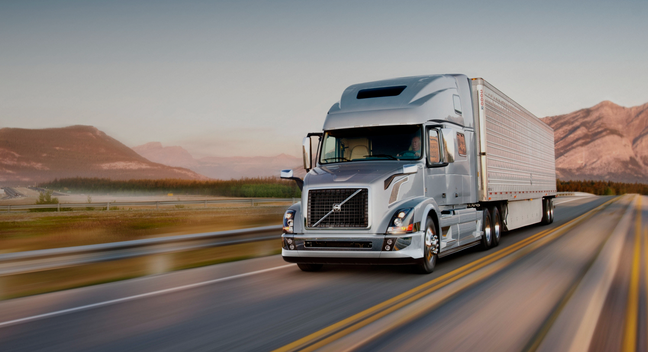If you live in the Great Lakes region of the country, right about this time of year things tend to get a bit dreary. It’s cold, it’s gray, and the weathered slush piles are eroded just enough to see all the trash. For everything, and everybody west of the Appalachians, New York, Pennsylvania, on through Ohio, Indiana, Illinois and on up by Wisconsin, Michigan and Minnesota way, it is really is a lovely time of year, perhaps even rivaling mud season in Colorado.

Great Lakes State of Mind
Sure, the drama of the dreaded “polar vortex” livened things up a bit in January, as if winter-as-usual was the beginning of the apocalypse. Nevertheless the wintry, chilling effect of cabin fever can be seen everywhere and people are getting downright crabby. And perhaps similar to Punxsutawney Phil, another sure sign of this distinctly mid-western, mid-winter malaise is just like that everybody in Ohio scurries out of their holes and goes to Naples or some similar place warm to wait it out.
Let’s not be mistaken though, we Great Lakers love it up here. We have a lot to be grateful for: For one, we have a mostly benign climate generally (few tornados compared to say Oklahoma) that only kill people occasionally, one or two earthquakes a century, rarely a brush or forest fire of any proportion, and the real kicker, we hold 201% of the world’s freshwater, which according to Wikipedia is enough to cover the lower 48 in 9.5 feet of water! Drink deep my friends!
Third Biggest Economy in the World
For all those plying the highways for a living hauling freight and goods around the Great Lakes, it may be winter, but we’re far from frozen. The region is absolutely dense with industrial and consumer manufacturing and the exchange and trade of goods and services with Canada is pretty impressive. Business Insider recently published an infographic revealing just how mighty the economy of the Great Lakes Region is.
“After all,” says Business Insider, “the region is tightly integrated in terms of trade. It alone accounts for more than 50% of all U.S./Canadian bilateral border trade and sees over 200 million tons of cargo shipped annually.” If it were its own country, the publication says, it would have a GDP of $6 trillion - making it the third biggest economy in the world.
Everything not exactly great with the Great Lakes.
OK, so not everything is so great here in the Great Lakes. Apparently all this economic activity puts a lot of people on the road and things are getting a bit crowded. Our friends at the American Truck Research Institute (ATRI) just put out a study which revealed northern Indiana is home to the country’s busiest highway interchange and the this tangle causes some of the nation’s worst delays for truckers.
ATRI says the place where northbound Interstate 65 flows into the westbound Borman Expressway (Interstates 80 and 94) is the 11th-most congested location on the nation’s interstates. The study found the average speed at this location slowing to around 40 mph in the early afternoon. The Indiana DOT (INDOT) says about 100,000 trucks and cars use that stretch of I-65 daily, and nearly 150,000 a day use the westbound lanes of the Borman at that spot too.
The ATRI says its ranking is based on global-positioning data from nearly 1 million heavy-duty trucks. Part of the reason ATRI does this, is to provide data to government agencies and others. President of the Indiana Motor Truck Association says the analysis provides a clear roadmap on where the state should be targeting its infrastructure investments to address chokepoints and improve mobility for cars and trucks. INDOT for example, said it has already made adjustments to traffic patterns to help alleviate congestion and increase safety.
Still not beating the East Coast but it’s not a competition
Although we’re at # 11 and trying hard, the # 1 spot in the ATRI’s 2019 Top Truck Bottleneck List is Fort Lee, N.J., where I-95 meets State Road 4. The top-10 list included a Chicago location, I-290 at I-90/94, at No. 7.
The ATRI says congestion is getting worse, in the Great Lakes and in general. Average truck speeds at the top 10 locations have slowed 9% from the previous year. According to the study, three other Indiana interchanges, all in Indianapolis, placed among the ATRI’s top 100 congestion locations. Those are I-65 at I-70 (north and south) and I-465 at I-69.
For those in trucking and shipping freight over our public highway infrastructure, traffic is more than just an occupational hazard. Congestion is at the root cause of many of the “excursions” that affect safety and impact the number of, “ahem” impacts that occur between vehicles of all types.
Although traffic has a slowing effect, which may help somewhat, when things get tight, people get tighter and “stuff” can start to happen. Much of this, really is so much “friction” from what actually is one of the more dynamic economic regions in the world.
Did you know that nearly 10,000 trucks cross the Ambassador Bridge from Detroit to Windsor every day? That’s quite a few, but just another metric revealing the intensity of commerce here. Do take a look at Business Insider’s infographic; it really is amazing.
With so many trucks and civilians on the Great Lakes’ interstates and highways, there’s few regions in the country that can afford to pay less attention to the quality of their roads. If you have been out on them lately, it’s pothole season, but there are stretches of Illinois and Indiana that are incredibly bad.
Our economy depends on Great Roads and if the Great Lakes are to have them every state in the region needs to align themselves and their collective resources to this fact.
Sources:
https://www.businessinsider.com/great-lakes-region-economy-infographic-2017-8
https://www.chicagotribune.com/suburbs/post-tribune/news/ct-ptb-interstate-bottleneck-st-0218-story.html
